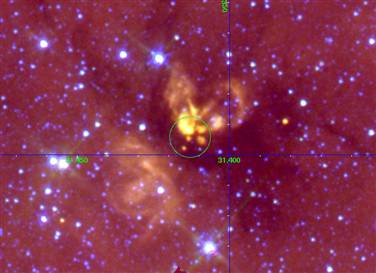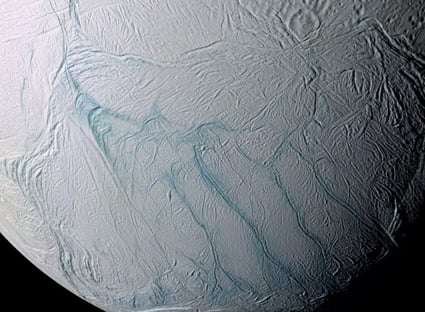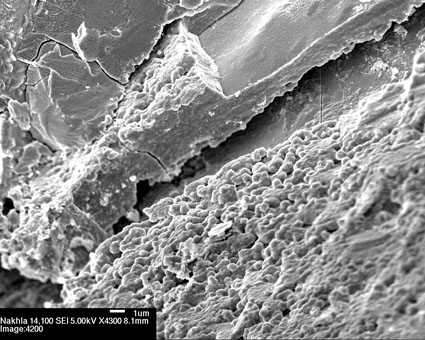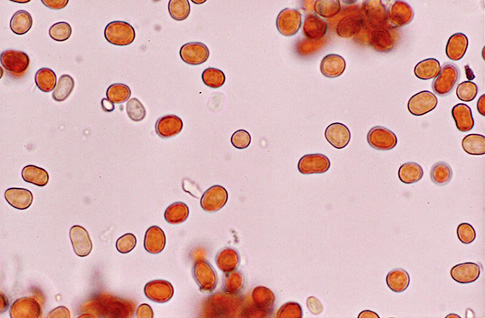Life on Earth May Be Of Extraterrestrial Origin
The basic constituants of life exist on space and now we are finding other evidence.




Life may predate the Earth and actually be a cosmic phenomenon.
The discovery of a carbonaceous chondrite meteorite that contains fossils of bacteria inside lends support to the idea that life had origins somewhere other than earth. “The meteorite was discovered in 1984 (in Antarctica), but it was not until 1996 that scientists announced evidence of life in the ancient rock. Though the findings are still controversial, the meteorite contains fossilized remains that could be a primitive form of bacteria. If so, ALH 84001 is the first hard evidence that life of any kind evolved on a planet other than Earth.“ (1) There is a lot of controversy over this meteorite that even Bill Clinton commented on when scientists went public. However, in the summer of 2001 during the Indian Monsoons, a red rain fell for weeks on end. Some of this was collected and the red coloring was found to contain small objects that appeared for all intents and purposes to be red blood cells. The length of the red rain period excluded the idea of a single meteorite and favored something else like interplanetary dust. But why was this concentrated just in Kerala, India? (2) The possibility of extraterrestrial life suggested that life existed in a dormant state in the solar nebula while earth and planets were yet being born.
The theory of panspermia tells us that the basic compounds of life are seeded to all bodies in space; i.e., stars, planets, moons, comets and asteroids. Indeed, complete structures may also be seeded throughout space from times before the birth of our solar system. Where conditions are right, life will begin to grow and evolve to fill all suitable environmental niches. As life began on earth immediately after the heavy bombardment period ended some 3.5 billion years ago, this makes a strong case that life arrived in the form of spores, viruses and bacteria like types at that time. Life of this sort can live in a wide variety of environments from temperatures in excess of 600 degrees Celsius, to below freezing, in hydrogen sulfide or methane atmospheres to those rich in oxygen such as ours.
Complex life on the other hand can only exist in a narrow temperature band, water rich and in a type of atmosphere such as we have now. Complex life cannot withstand the rigors of a hard vacuum, intense ionizing radiation, sudden high acceleration and great extremes in temperature. Most spores and viral like organisms have been proven in experiments to be able withstand such demanding rigors. Thus the most likely form of life to be of extraterrestrial origin, even today and in the future are spore and virus like species. Indeed, some astronomers think that Earth is seeding the interstellar environment right now as spores and viruses lofted high into the atmosphere, escape the confines of earth and get carried out into space by the influence of the solar wind. On the other hand, life in this form drifts from other sources into the solar system. Another method of escape is thought to be via high acceleration provided near the site of a meteorite impact such as a sizable comet or asteroid. Only small forms like spores and viruses can survive such impact acceleration and the rigors of ionizing radiation.
We know from atomic detonations and tests that the more complex the organism, the more subject it is to disruption and destruction by radiation. Since 1945, we have known for certain about radiation sickness. Experiments conducted on other forms from mammals, to insects and microbes have determined that microbes stand up to radiation the best. Understanding the structure of the atom helps in explaining this in two ways. Smaller organisms make a smaller target and are more likely to escape an ionizing hit. As the atom is mostly empty space, much radiation can pass right through. A microbe like a spore or virus thus has a better chance in deep space than a human being, a bird or plant.
In deep space, the temperature is close top absolute zero. Some regions of space have a concentration of ionizing radiation. Precursors to DNA and RNA have been found in warm and cold gas clouds in deep space, not necessarily close to stars. Research has also found the spectographic signatures of molecules such as adenine, cytosine, thymine and guanine, the four basic genetic molecules of DNA. It is thought these have been there for billions of years. Exciting new developments in observation suggest panspermia as the norm for the seeding of life to planets, whether suitable or not.
"Astronomers at W. M. Keck Observatory have found, for the first time, some of the basic compounds necessary to build organic molecules and proteins found in DNA within the inner regions of a planet-forming disk. The object, known as "IRS 46," is located in the Milky Way galaxy, about 375 light years from Earth, in the constellation Ophiuchus....We see prebiotic organic molecules in comets and the gas giant planets in our own solar system and wonder, where did these chemicals come from?" said Dr. Marc Kassis, support astronomer at the W. M. Keck Observatory. "The Spitzer Space Telescope is letting us study these young stellar objects in new and revealing ways, giving us exciting clues about where life may form in the universe."
The two organic compounds found; acetylene and hydrogen cyanide, are commonly found in our own solar system, such as the atmospheres of the giant gas planets, the icy surfaces of comets, and the atmosphere of Saturn's largest moon, Titan. Another carbon-containing species detected, carbon dioxide, is widespread in the atmospheres of Venus, the Earth, and Mars. "If you add hydrogen cyanide, acetylene and water together in a test tube, and give them an appropriate surface on which to be concentrated and react, you'll get a slew of organic compounds including amino acids and a DNA purine base called adenine," said Keck Astronomer Dr. Geoffrey Blake, of the California Institute of Technology in Pasadena and co-author of the paper. "Now, we can detect these same molecules in the planet zone of a star hundreds of light years away."
The presence of gas-rich disks around young stars is well known, but little is understood about the chemical structure inside. The discovery of acetylene and hydrogen cyanide in one of these disks will help astronomers better understand these disks, where future solar systems may someday form and possibly result in life. Since 2003, the NASA Spitzer Space Telescope has allowed astronomers to use this technique to study molecular compounds in protoplanetary disks of young stellar objects. The Spitzer "c2d legacy program" has looked at more than 100 sources in five nearby star-forming regions and only one, IRS 46, showed clear evidence of containing the organic compounds in the warm regions close to the star where terrestrial planets are most likely to form.
While the precise events leading up to self-replicating nucleic acids remains unclear, the molecules of acetylene (C2H2) and hydrogen cyanide (HCN) have been shown to produce the base compounds necessary to build RNA and DNA. The team found that the abundance of hydrogen cyanide (HCN) was nearly 10,000 times higher than that found in cold interstellar gas from which stars and planets are born. Models of early solar-system chemistry have historically centered on data from our own primitive solar system, but now discoveries of protoplanetary disks have opened the field to solar systems other than our own. Theoretical models have suggested that large quantities of complex organic molecules would be present in the inner-most regions of these disks, but until now, no observational tests have been possible." (3)
So called primitive life may have arrived early in history and may continue to arrive on Earth inside meteorites or even in tiny flakes of dust that gently rain down daily from near space as Earth orbits through the interplanetary medium. In the beginning, the solar system was mainly a huge dust disk. Out of this evolved the sun, all the planets, moons, proto-planets, comets, meteoroids and asteroids. Though material was sorted by the solar wind, the lighter material can be found on Venus, Earth and outward. For a short period, a meteorite that was thought to have come from Mars due to an impact, was found in Antarctica and petrified life like forms were found inside. Ultimately, no guarantee could be made that it was not contaminated from Earth itself, which seen as a reverse argument, supports the idea that Earth can seed space with life. It was though at one time that new diseases came as a result of Earth being infected by alien organisms drifting into the solar system from deep space.
Deep space observation and the red rain of Kerala, India in 2001 lend support that the seeds of life are spread throughout the cosmos. The idea will be put to more stringent tests when space probes gather dust in the remnants of the solar accretion disk, material from Mars, Titan and the Jovian moons. If this prove positive, we will then have to ask, just how long has life existed in the universe?Until then, we are stuck with a mystery and controversy.
1. http://www.aerospaceweb.org/question/astronomy/q0193.shtml
2. http://www.thelivingmoon.com/46_mike_singh/03files/Sentient_Life_01.html
3. Date Released: Tuesday, December 20, 2005 Source: W.M. Keck Observatory








